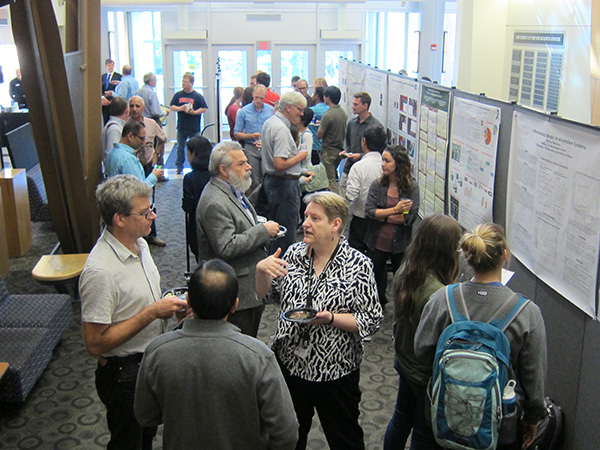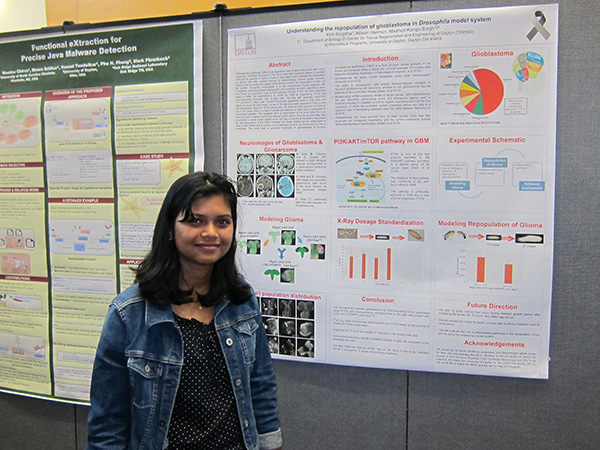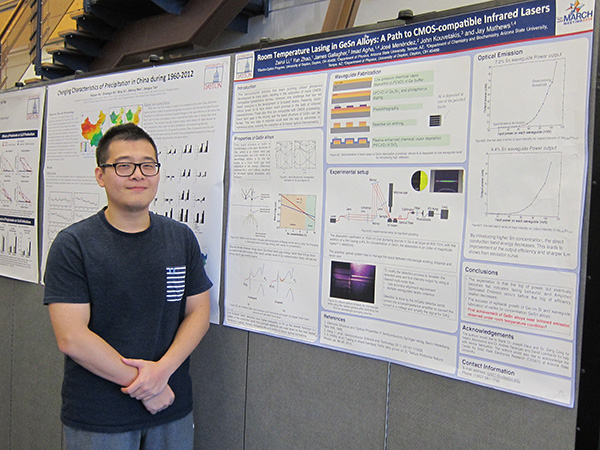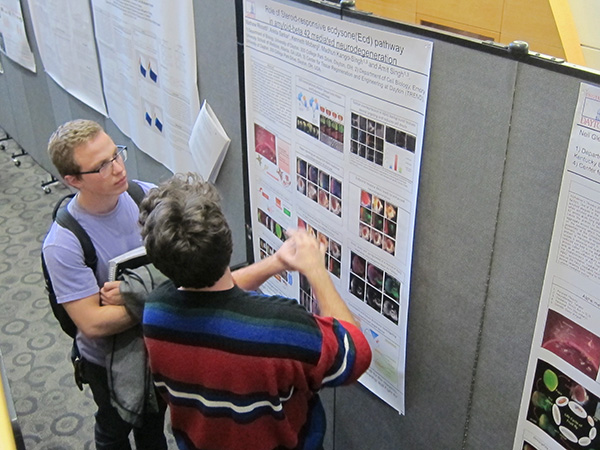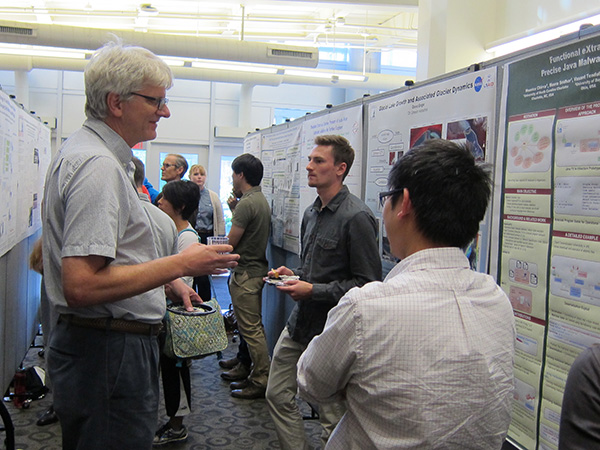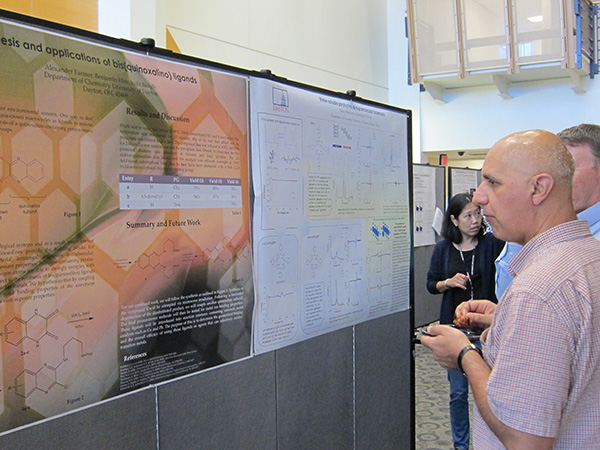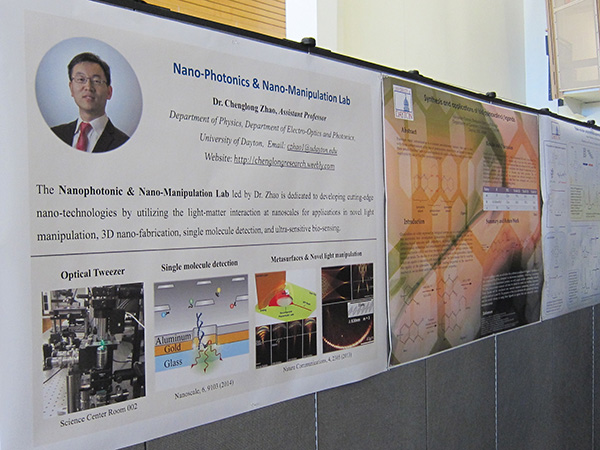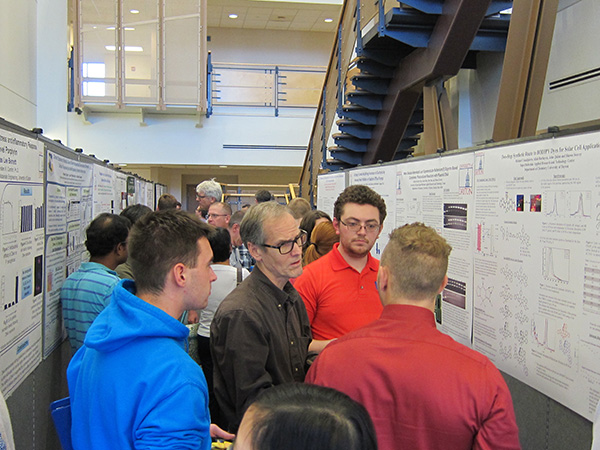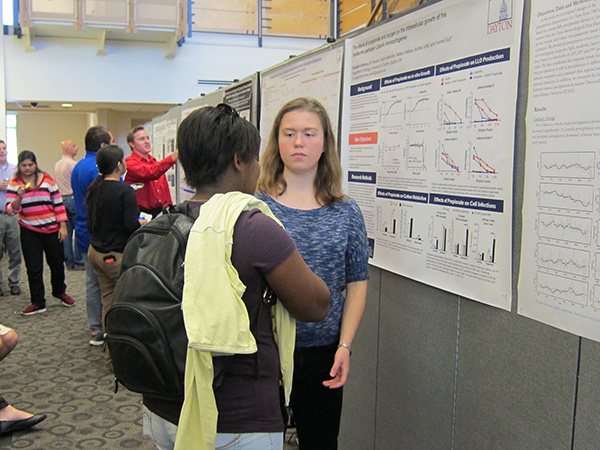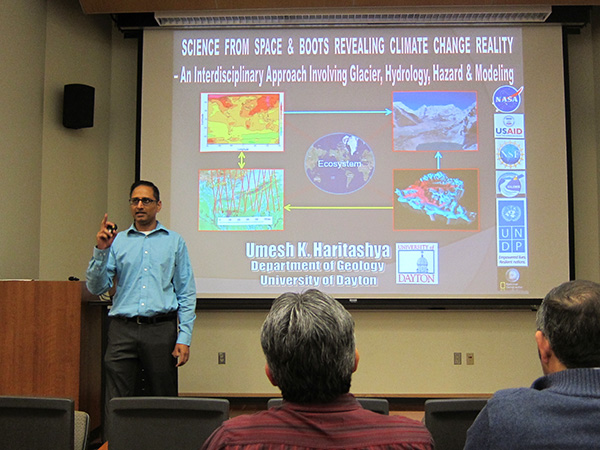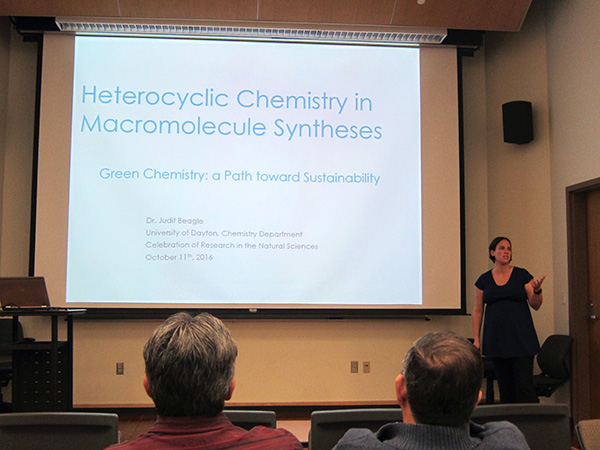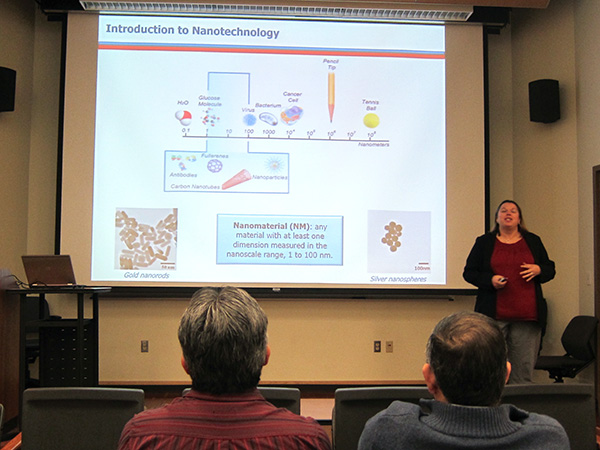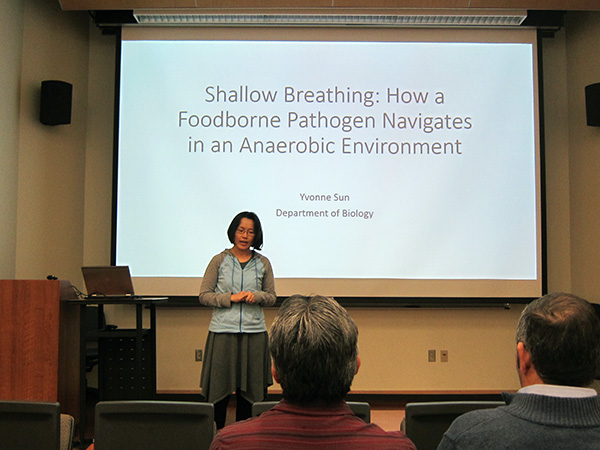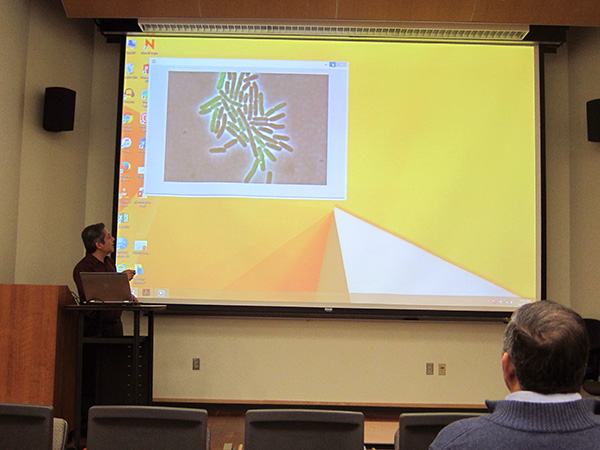College of Arts and Sciences Newsroom
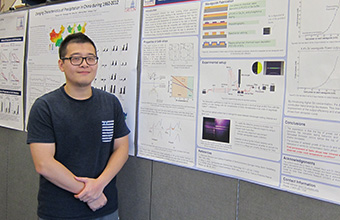
Celebrating Science Research
University of Dayton science faculty are researching significant issues that range from the impacts of melting glaciers in the Himalayas to the development of safer and more sustainable chemical reactions using microwave technology.
On Tuesday, Oct. 11, six faculty members presented their work at the first Celebration of Research in the Natural Sciences. The event featured brief presentations in the University Science Center auditorium by faculty from the departments of biology, chemistry, geology, mathematics, physics and bioengineering. It also included a student poster session in the Science Center atrium with more than 25 displays by graduate and undergraduate students.
The goal was to provide a venue for associate and pre-tenure assistant professors from across the natural sciences disciplines to discuss their work with faculty and students, said Shawn Swavey, professor of chemistry and the Mann Chair in the Sciences, who organized the event. Exposing faculty to research being conducted in other Science Center laboratories could encourage greater collaboration, he said.
"I was excited to see both the research that was presented and the strong turnout," said Doug Daniels, research professor in chemistry and executive director of the University of Dayton SupraMolecular Applied Research and Technology Center. "There was a high level of engagement and it really underscores the existing and growing interest in collaborative work between faculty members. We heard several speakers express interest in identifying collaborative partners within the University."
One speaker, Judit Beagle, assistant professor of chemistry, said she loved making molecules and offered to create them for colleagues' research. She presented research about creating sustainable chemistry through the use of microwaves.
The other presenters were Alan Veliz-Cuba, assistant professor of mathematics; Yvonne Sun, assistant professor of biology; Jay Mathews, assistant professor of physics; Umesh Haritashya, associate professor of geology; and Kristen Comfort, assistant professor and director of the bioengineering graduate program within the School of Engineering. Comfort has her laboratory in the Science Center and frequently works with College of Arts and Sciences faculty.
Sun presented research into how listeria, a bacterium that can contaminate food and cause potentially fatal infections, senses and responds to changes in oxygen and acids in its host environment, and how those conditions affect its ability to cause disease in people.
"As a new faculty member, being able to present here means that I can show and explain what I do to faculty of different disciplines," she said. "Then they have a better idea of who I am and what I do when I see them in the hallway and say hello."
Sun said promoting her research could help her connect with collaborators outside her discipline, particularly with chemistry faculty for her future chemical analysis work.
"It is going to make my project or my program much stronger if I can have collaborations right here, rather than having to go elsewhere," she said.
More than two dozen students participated in the poster session, including Elizabeth Abrams, a senior from Columbus, Ohio, who is majoring in biology. She is one of the undergraduates working in Sun’s research lab.
"It is a really neat opportunity, because a lot of times it feels like everything we do, the only people who know about it are the 13 people in our lab," Abrams said. "But to be able to talk about it and look for opportunities for collaboration and see where things connect, and also just to share what we are doing and get excited about the potential impacts it can have is really neat. To be able to do it here at UD is awesome."
Swavey selected this year's faculty presenters, but in future years he plans to ask each natural sciences chair to recommend a faculty member from their department.
“I hope this evolves into something even bigger that can be done on an annual basis,” Swavey said. “There is a lot of buy-in among faculty. I think a lot of people are interested in doing it.”
- Dave Larsen, communication coordinator, College of Arts and Sciences
PresenterS
| Presenter | Department | Title |
| Alan Veliz-Cuba | Mathematics | Mathematical Modeling of Biochemical Networks |
| Yvonne Sun | Biology | Shallow Breathing: How a Foodborne Pathogen Navigates in an Anaerobic Environment |
| Kristen Comfort | Bioengineering | Development of enhanced in vitro systems for improved evaluation of nanomaterial-induced cellular responses |
| Jay Mathews | Physics | Advancing silicon photonics: Approaches to producing infrared active materials and devices on Si |
| Judit Beagle | Chemistry | Heterocyclic Chemistry in Macromolecule Syntheses |
| Umesh Haritashya | Geology | Science from space and boots revealing climate change reality |

